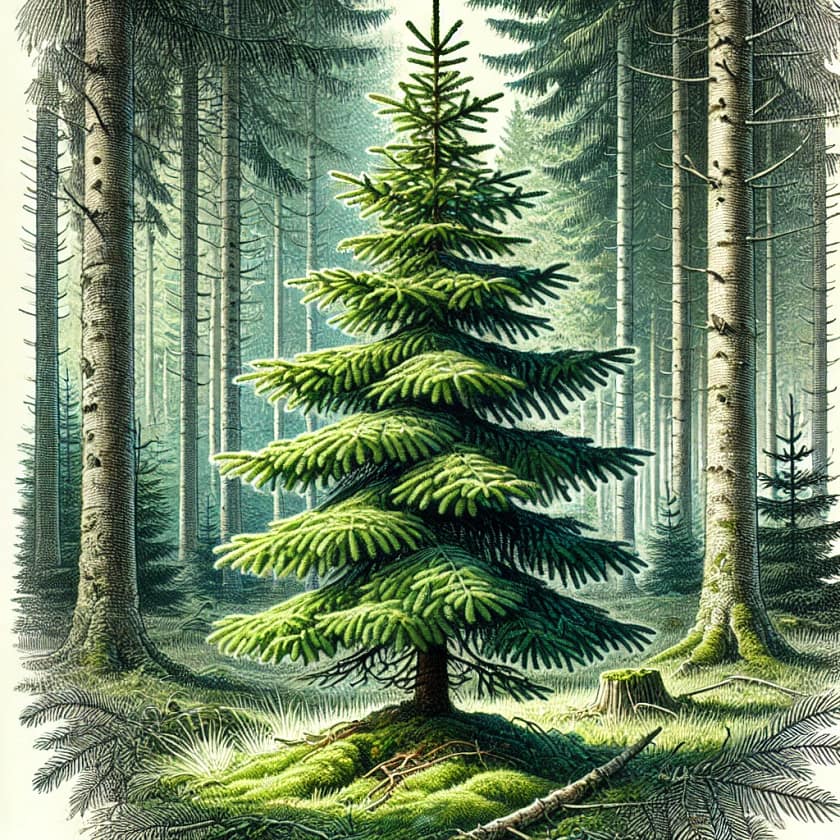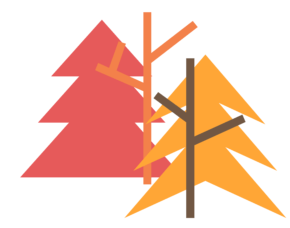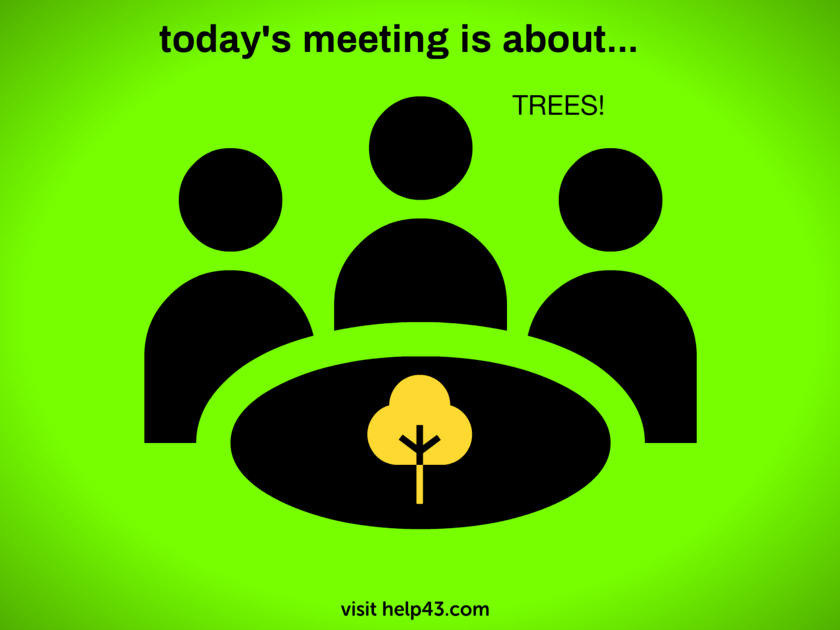(Picea abies)
Introduction
In the dense, cool forests of Northern Europe and Scandinavia stands the majestic Norway spruce (Picea abies). Renowned for its towering height and conical shape, this tree is a symbol of resilience and natural beauty. The Norway spruce’s significance extends beyond its physical presence, deeply rooted in cultural traditions, myths, and historical narratives. This article delves into the captivating stories and legends that surround the Norway spruce, exploring its botanical characteristics, cultural importance, and ecological role.
Old Tjikko
The Ancient Spruce
One of the most remarkable stories associated with the Norway spruce is that of Old Tjikko, the world’s oldest clonal tree. Located in Sweden’s Fulufjället Mountain, Old Tjikko is approximately 9,558 years old. Named by Professor Leif Kullman after his late dog, this ancient tree’s story begins during the last Ice Age, surviving through millennia of climatic changes by cloning itself. While the visible trunk is much younger, the tree’s root system has persisted for nearly ten millennia.
Old Tjikko’s discovery has fascinated scientists and nature enthusiasts alike, offering a living glimpse into Earth’s distant past. The tree stands as a testament to the longevity and resilience of the Norway spruce, embodying the ancient wisdom of the natural world.
The Yule Tree Tradition
The Norway spruce holds a special place in the heart of European cultural traditions, particularly in the celebration of Yule and Christmas. The Yule tree tradition, rooted in ancient Germanic and Norse customs, involved decorating evergreen trees to celebrate the winter solstice. This practice symbolized life and renewal during the darkest part of the year.
As Christianity spread through Europe, the Yule tree tradition evolved into the modern Christmas tree. The Norway spruce became a favored choice for its symmetrical shape, sturdy branches, and fragrant needles. Families would adorn the tree with candles, ornaments, and garlands, transforming it into a festive centerpiece during the holiday season. This practice has endured for centuries, making the Norway spruce an enduring symbol of celebration, warmth, and family gatherings.
The nordic celtic traditions and winter solstice on Youtube
Sacred Trees in Norse Mythology
In Norse mythology, trees were revered as sacred entities, with the mighty Yggdrasil, the World Tree, being the most iconic. While Yggdrasil was often depicted as an ash tree, the reverence for trees extended to many species, including the Norway spruce. These trees were believed to be the homes of spirits and deities, acting as bridges between the mortal and divine realms.
The dense forests of Norway spruce were considered magical places where mythical creatures like trolls, elves, and forest spirits resided. Folklore abounds with tales of these enchanted beings, with the spruce trees providing a mystical backdrop for their adventures. These stories have been passed down through generations, enriching the cultural tapestry of the regions where the Norway spruce grows.
Woodland Spirits and Folklore
Scandinavian folklore is rich with stories of woodland spirits and mythical creatures inhabiting the forests of Norway spruce. These beings, often depicted as guardians of the forest, were believed to protect the natural world and maintain the balance of ecosystems. Tales of trolls, huldras, and elves living among the spruce trees were common, and people would leave offerings to appease these spirits and ensure their favor.
One popular legend tells of the Huldra, a beautiful forest spirit who would lure men into the woods with her enchanting song. The Norway spruce, with its dense and shadowy groves, provided the perfect setting for such tales of mystery and allure. These stories not only entertained but also instilled a sense of respect and caution for the natural world.
The Norway Spruce in Modern Culture
Beyond its mythological and cultural significance, the Norway spruce has continued to play a vital role in modern society. It is widely cultivated for timber, paper production, and as a Christmas tree. Its wood is valued for its strength and versatility, used in construction, furniture making, and musical instruments such as violins and pianos.
The Norway spruce’s role in forestry is also crucial, with large plantations established across Europe for sustainable timber production. These managed forests provide habitat for wildlife, contribute to carbon sequestration, and support local economies. The tree’s adaptability and fast growth make it an important species in reforestation efforts and ecological restoration projects.
Ecological Importance and Conservation
The Norway spruce is a keystone species in its native habitat, supporting a diverse range of flora and fauna. Its dense canopy provides shelter for birds and mammals, while its needles and bark offer food for various insects. The tree’s deep roots help stabilize soil and prevent erosion, playing a critical role in maintaining forest health.
Conservation efforts for the Norway spruce focus on preserving old-growth forests and protecting ancient specimens like Old Tjikko. These initiatives aim to safeguard the genetic diversity and ecological integrity of spruce forests, ensuring their resilience in the face of climate change and other environmental challenges.
Conclusion
The Norway spruce (Picea abies) is more than just a tree; it is a living symbol of nature’s endurance, a cultural icon, and a source of countless legends and stories. From the ancient roots of Old Tjikko to the festive traditions of the Yule tree, the Norway spruce weaves a rich narrative that spans millennia. Its significance in folklore, mythology, and modern society highlights the deep connection between humans and the natural world.
As we continue to study, protect, and celebrate this remarkable tree, we honor its legacy and ensure that its stories will be told for generations to come. The Norway spruce stands tall, a testament to the enduring magic and mystery of the forests it inhabits, reminding us of the timeless beauty and resilience of nature.

Green spires touch the sky,
Winter’s breath in silent woods,
Old tales in each bough.
~ the Norway Spruce (Picea abies) ~
Shop tip
Snowflakes and spruce on Amazon
Thank you for likes, shares and comments! 🌳🌴🌲🌵
Invest in your future
Take time to learn
Embark on your journey in affiliate marketing and website creation alongside an incredible community and myself. Invest in your future by dedicating time to learn and earn. Take all the time you need to master the basics before aiming higher. Give it a try and sign up for free. You won't regret it! Discover the possibilities for yourself...


